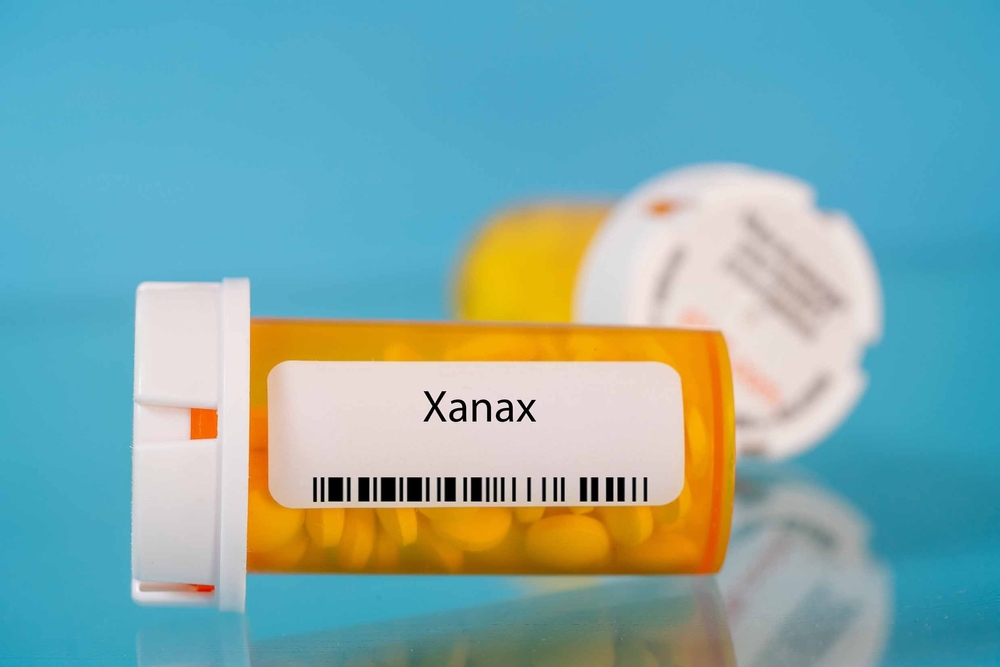Last Updated:
August 19th, 2025
Xanax Rehab Treatment | What to Expect
When you started taking Xanax, it may have been something to help you feel calmer, deal with anxiety or overcome insomnia. However, that sense of control can fade when Xanax addiction takes over. Some people use Xanax for years before they realise it’s become a problem, while others notice sooner but don’t feel like they can stop. Whether you have just started to worry or you’ve been struggling in silence for a while, Xanax addiction treatment can help you overcome both the fear of stopping and the exhaustion of carrying on.
What is Xanax addiction treatment?
Xanax addiction treatment is a professional programme which gives you the tools, space and support to break free from addiction safely. It usually takes place in three key stages, each designed to meet your needs at different points in recovery.
- Xanax detox: A medically supervised process that helps your body adjust without Xanax while managing withdrawal symptoms.
- Xanax rehab: The heart of the treatment process, where you work with professionals to identify triggers for Xanax use, build lifelong coping skills and make real psychological and behavioural changes.
- Aftercare: The safety net that continues once formal rehab treatment ends, with ongoing therapy, check-ins and support networks to help you stay grounded and focused.
Step one: Xanax detox
Xanax detox is where the drug is cleared from your body under professional supervision. Detox is a careful process that helps manage the withdrawal symptoms that can come when you stop using Xanax, particularly if you’ve been on it for a long time or have developed a high tolerance.
Doctors usually taper your dose slowly, reducing it bit by bit rather than stopping all at once. This helps your nervous system adjust and lowers the chances of severe Xanax withdrawal symptoms. In some cases, medication may also be offered to manage symptoms as they arise.
The main goal of prescription drug detox is to keep you safe and comfortable while your body rebalances. Once that is done, you will be much better prepared to focus on therapy, healing and rebuilding your life.
Struggling with an addiction? If you are ready to seek help, reach out to us today, and a member of our compassionate team will help you find the best option for starting your recovery journey.
Xanax withdrawal symptoms and detox timeline
Xanax has a very short half-life, which means it leaves your system quickly but also causes sudden, escalating withdrawal. Here is a general overview of what the Xanax detox timeline may look like:
- Anxiety or restlessness
- Irritability
- Headaches
- Insomnia
- Nausea or stomach upset
- Intense anxiety or panic attacks
- Sweating and tremors
- Sensory sensitivity (light and sound)
- Muscle pain or stiffness
- Nausea, vomiting or diarrhoea
- Hallucinations or seizures in extreme cases
- Mood swings or low mood
- Trouble sleeping
- Ongoing cravings
- Fatigue
- Mild depression or anxiety
- Difficulty focusing
- Emotional numbness or irritability
- Insomnia that comes and goes
Step two: Xanax rehab
Detox may clear Xanax from your body but prescription drug rehab clears the path for your future. Xanax rehab is all about rebuilding the parts of life that addiction tried to take from you so you have a brighter future ahead.
A big part of rehab is exploring what led you to Xanax in the first place. Was it stress? Past trauma? A sense of numbness or anxiety that you didn’t know how to handle?
Xanax rehab will help you face those challenges head-on and find healthier ways to deal with them. The goal is that by the time you leave rehab, you will not just have detoxed, but transformed your whole mindset.
What to expect from Xanax rehab
Xanax rehab can differ a lot between different centres, programmes and even from person to person. However, some of the most important rehab therapies which you may experience during your time in treatment include:
- One-on-one counselling to explore what led you to Xanax use (usually only available at private Xanax rehab centres)
- Group therapy for encouragement and shared support
- Behavioural therapies to rewire old habits and create healthier ones
- Family therapy sessions to repair and strengthen important relationships
- Motivational interviewing to help you find your inner drive
- Holistic options like yoga, meditation and creative outlets for deeper healing
All of this will ensure you leave rehab with real strategies for staying grounded and support systems you can rely on.
Step 3: Aftercare to help prevent a Xanax relapse
No matter how well you respond to Xanax rehab, there is still a risk of relapse, particularly in the first weeks and months. When life returns to its usual pace, old habits and triggers can creep back in but that’s where aftercare can be a real difference maker. It bridges the gap between rehab and real-world recovery, making sure you’re not going it alone. Here are some important elements of aftercare:
How to tell if you need Xanax addiction treatment
Prescription drug addiction can feel like a grey area and it’s not always obvious when helpful becomes harmful. But if you’ve been wondering whether you’re still in charge or whether Xanax is now calling the shots, these are some clues:
- You feel anxious or shaky if you miss a dose by even a few hours
- You have increased your Xanax dose without checking with a doctor first
- You spend a lot of time thinking about your next dose of Xanax or how to get it.
- You’ve lied to friends, family or healthcare professionals about your Xanax use.
- Daily tasks feel harder without Xanax in your system.
- You’re forgetting conversations, blacking out or falling asleep at odd times.
- Even when you know it’s hurting you, stopping Xanax still feels impossible.
Spotting these signs early can make all the difference in getting the support you need.
Seek xanax addiction treatment today
Struggling with Xanax isn’t a failure, it’s a sign that you need a little support. Addiction Helper can connect you with leading rehab centres offering every stage of treatment. Contact us today for expert advice with no pressure.
Our compassionate team are ready and available to take your call, and guide you towards lasting the lasting addiction recovery you deserve.
Frequently Asked Questions
(Click here to see works cited)
- Pétursson, H. “The benzodiazepine withdrawal syndrome.” PubMed, 1994, https://pubmed.ncbi.nlm.nih.gov/7841856/. Accessed 6 June 2025.
- Washington, Nicole, and Alyssa Peckham. “Xanax Withdrawal: Symptoms, Severity, Length, and Treatment.” Healthline, 20 January 2023, https://www.healthline.com/health/xanax-withdrawal-symptoms. Accessed 6 June 2025.



